Introduction to the World of Language Learning Apps
In an age where the world feels smaller yet more diverse than ever, learning a new language has transcended beyond a simple hobby or academic requirement; it has become a doorway to understanding cultures, enhancing career opportunities, and forging deeper connections with people from all walks of life. The digital era, brimming with technological advancements, has ushered in the rise of language learning apps, transforming smartphones and tablets into portals of linguistic discovery.
Why Language Learning Apps?
Gone are the days when mastering a new language meant being confined to the traditional classroom setting, grappling with hefty textbooks, or getting lost in translation with outdated audio tapes. Today’s language learning apps offer a plethora of benefits, making them an indispensable tool for modern learners:
- Accessibility: Learn anytime, anywhere, right at your fingertips.
- Interactivity: Engaging activities, games, and quizzes make learning fun and effective.
- Personalization: Tailored lessons adapt to your learning pace and style.
- Diversity: From Spanish to Swahili, access a wide array of languages in one place.
But with countless apps available in the market, each promising a unique approach to language mastery, how does one choose the right companion for their linguistic journey? This guide delves deep into the digital language learning landscape, sifting through the myriad of options to bring you a curated list of the best language learning apps. Our selection criteria hinge on user experience, innovative teaching methodologies, variety of languages, affordability, and, most importantly, real-world effectiveness.
As we embark on this exploration together, let our journey be guided by the understanding that language is more than just words and grammar; it’s a tapestry of culture, history, and human connection waiting to be unraveled.
Criteria for Selection: Unveiling Our Compass
Embarking on the quest to find the ultimate language learning companion app is no small feat. In a sea of digital offerings, each app waves its flag, boasting features and methodologies. But what truly sets the best apart from the rest? Our compass for navigating this vast digital landscape is calibrated to five core criteria, ensuring that our selections not only meet but exceed expectations.
1. User Experience (UX) and Interface Design
- Intuitiveness: The app must be easy to navigate, making learning seamless and enjoyable.
- Aesthetics: A visually appealing interface that invites and retains learners.
- Responsiveness: Smooth performance across devices, be it a smartphone, tablet, or PC.
2. Comprehensive Language Offerings
- Diversity: A broad selection of languages, catering to a wide range of linguistic enthusiasts.
- Depth: Depth of content within each language, covering beginner to advanced levels.
3. Innovative Teaching Methodologies
- Engagement: Use of gamification, stories, real-life scenarios, and other interactive elements to enhance learning.
- Effectiveness: Proven pedagogical approaches that cater to various learning styles (visual, auditory, kinesthetic).
4. Flexibility and Personalization
- Customization: Ability to tailor the learning experience, setting personal goals and preferences.
- Adaptive Learning: The app’s capability to adjust the difficulty level based on the learner’s performance.
5. Affordability and Value
- Pricing Model: Transparency in subscription fees, free trials, and what each tier offers.
- Return on Investment: The tangible benefits gained in language proficiency relative to cost and time investment.
By adhering to these criteria, we ensure that our recommended apps stand out not just for their ability to teach languages but for providing a holistic and enriching learning experience. In the following sections, we’ll dissect each app through this lens, offering insights into how they stack up against our rigorous standards.
Top Language Learning Apps
Navigating through the vast sea of language learning apps, we’ve identified five standouts, each excelling in unique areas of the language learning journey. These apps cater to a range of learning preferences, from immersive methodologies to gamified experiences, ensuring there’s something for everyone.
1. Babbel
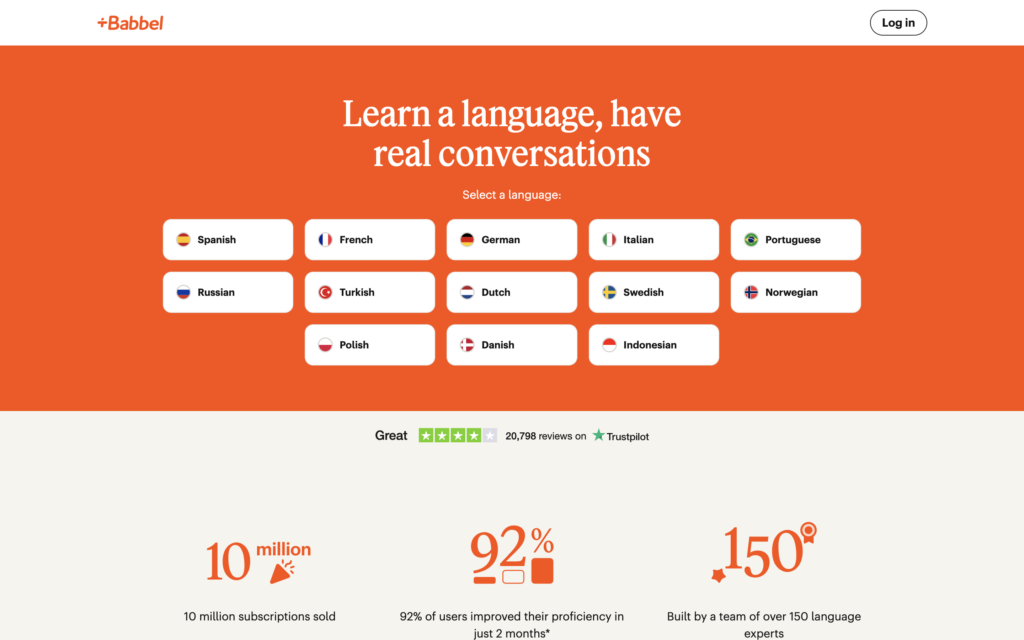
Babbel sets itself apart with its practical approach to teaching language in short, engaging sessions. The app is designed to boost your comprehension and confidence through interactive courses that cover reading, writing, listening, and speaking. A standout feature is the tailored review sessions that reinforce learned material, focusing on areas that need improvement. With 14 language options, Babbel is a solid choice for learners seeking a blend of traditional and interactive methods.
2. Memrise

Memrise excels in teaching vocabulary through high-quality video clips of native speakers, incorporating spaced repetition to cement new words and phrases in your memory. While it offers a vast vocabulary directory and customizable learning goals, it’s noted for teaching words and phrases in isolation, which may not suit those looking to understand language in a broader context. Memrise supports over 20 languages, making it a versatile tool for vocabulary expansion.
3. Rosetta Stone
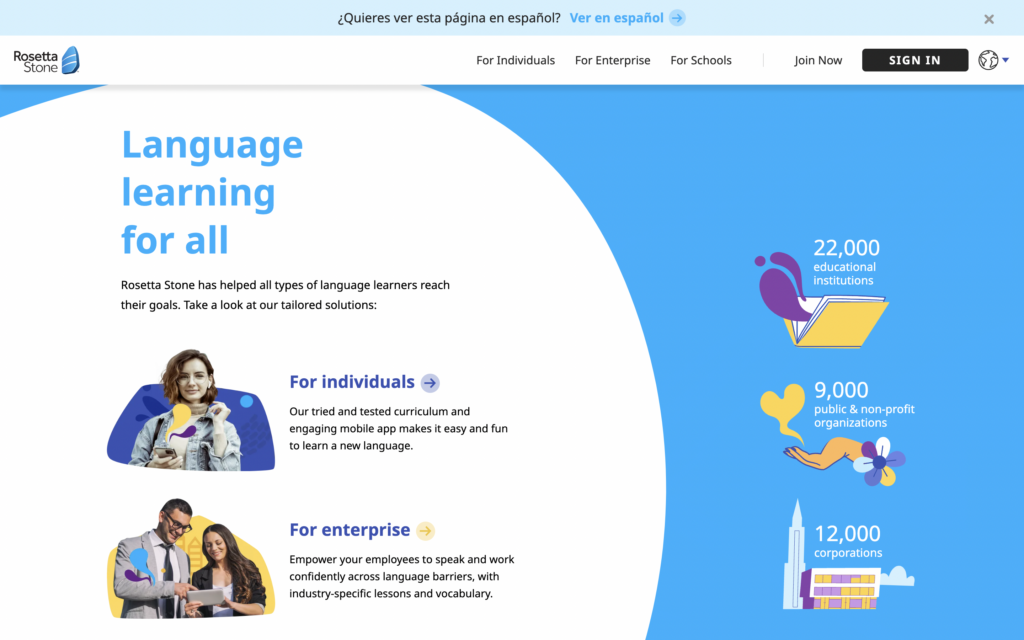
A pioneer in language learning, Rosetta Stone offers a comprehensive experience with its immersion-based method. It leverages speech recognition technology for pronunciation practice and provides a solid user experience without relying heavily on reading to learn grammar. However, the full content access comes with a price, and it doesn’t offer native language translations or a placement test to assess your starting level.
4. Pimsleur
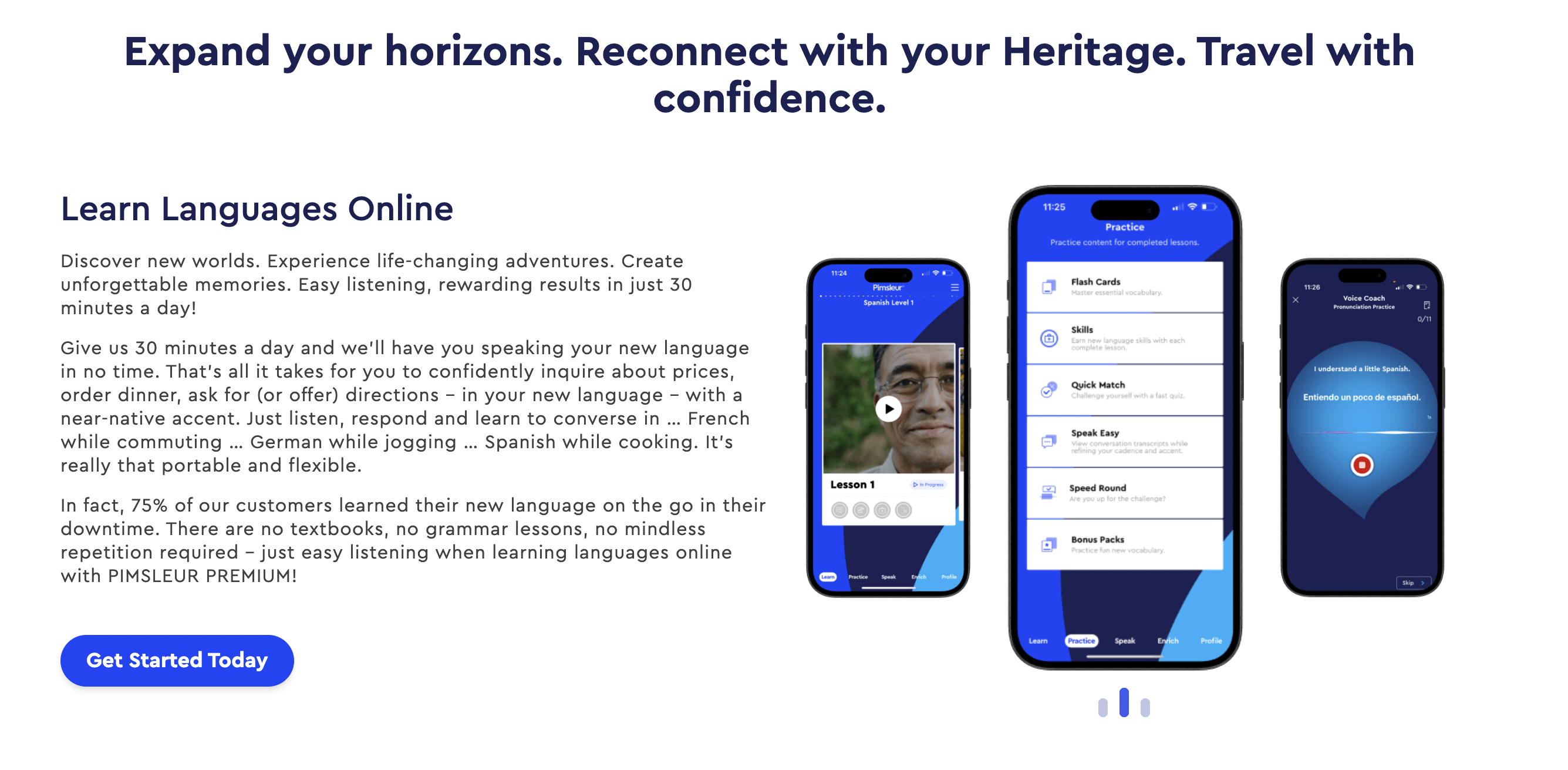
Pimsleur stands out for its extensive collection of languages and its unique, audio-based method, making it ideal for serious learners who prefer a more structured approach. Each lesson, designed to be completed in a single session, focuses on listening and speaking. This format is especially beneficial for learners with busy schedules who can integrate lessons into their commute, treating them like podcasts. Despite its proven method and extensive language options, Pimsleur’s higher price point and commitment requirement may not appeal to everyone.
5. Drops
Drops offer a visually engaging, gamified approach to building vocabulary. With quick, puzzle-like lessons, it’s designed for those looking to learn in short, frequent sessions. While Drops is excellent for vocabulary acquisition, it lacks in grammar practice and pronunciation features, making it better suited as a supplementary tool alongside other more comprehensive apps. It supports an impressive array of 50 languages, including some rare and endangered ones, making it a unique addition to your language learning toolkit.

6. Busuu
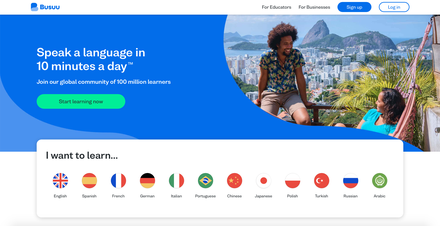
Busuu offers a comprehensive language learning experience with lessons crafted by expert linguists. It includes a variety of activities like audio recordings, fill-in-the-blank questions, and true or false quizzes. A unique feature is the ability for users to get feedback on speech and writing from native speakers, adding a valuable community aspect to the learning process. However, access to some content is restricted in the free version, and the app offers a smaller range of languages compared to others.
7. Mondly
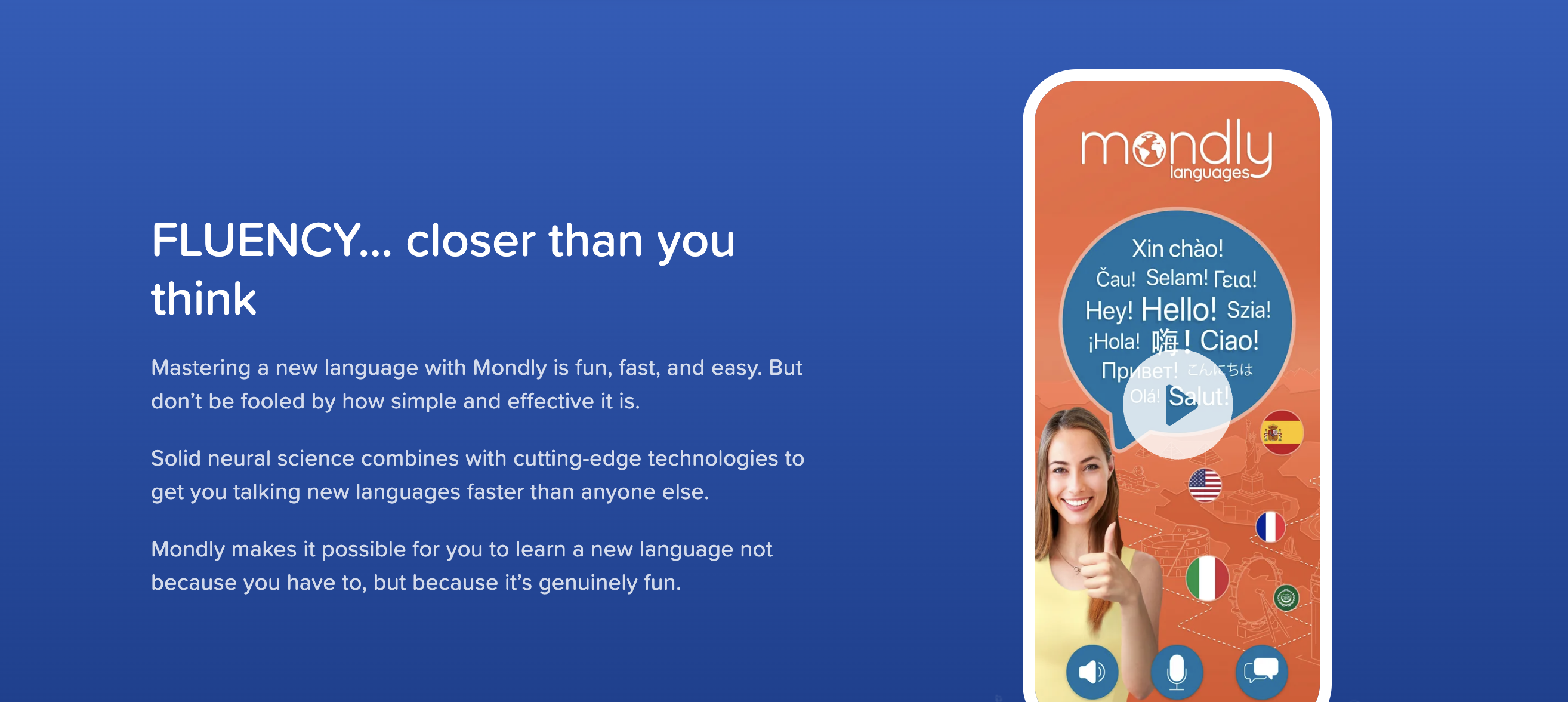
Mondly is known for its gamified learning approach, incorporating speech recognition in games that simulate real-life conversations. The app tracks progress with learning stats and leaderboards, adding a competitive edge to language learning. While Mondly is excellent for beginners and supports 33 languages, it may not cater as well to advanced learners looking for in-depth content.
8. DuoLingo

DuoLingo is arguably one of the most popular language learning apps, thanks to its user-friendly interface and gamified learning process. It offers a wide range of languages and tailors lessons to individual learning styles. The app is free, with optional premium features, making it accessible to a broad audience. However, it may not provide the depth required for more advanced language learners.
9. HelloTalk
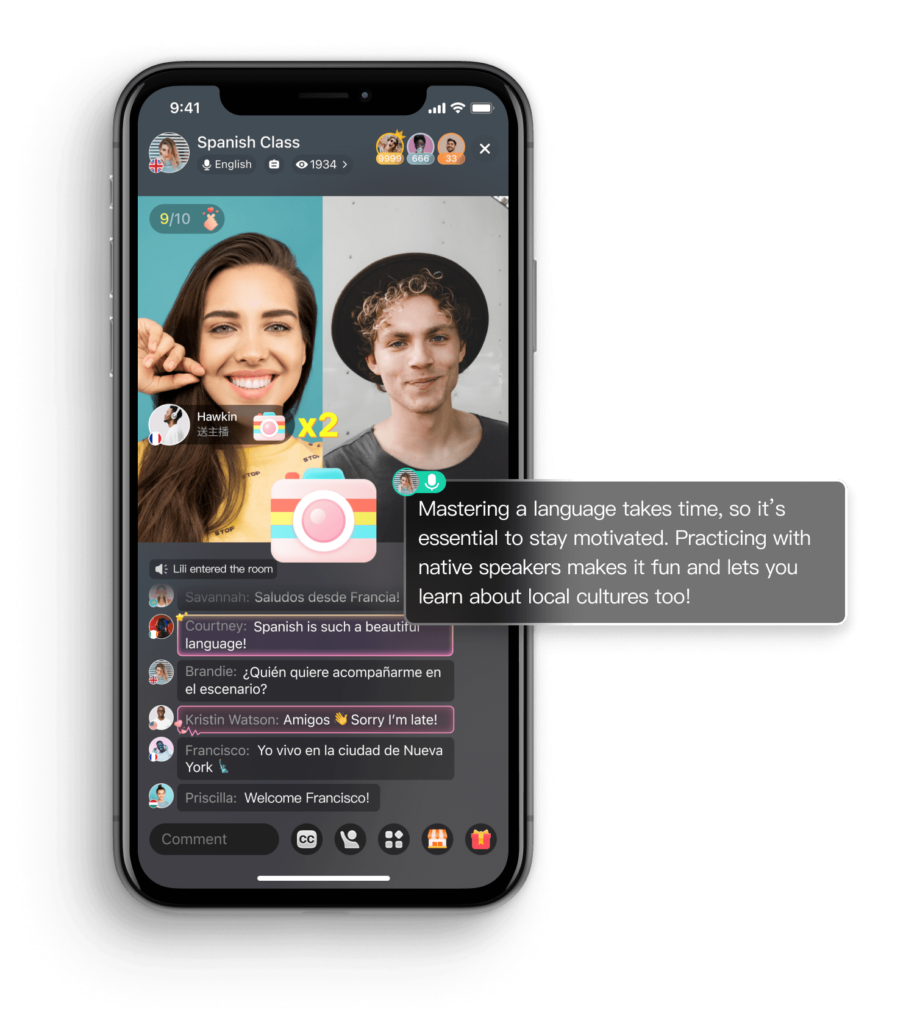
HelloTalk is unique in its approach, focusing on language exchange between users. It allows learners to practice with native speakers through text, voice messages, and even calls, facilitating a real-world learning experience. The app also offers translation, correction, and pronunciation tools to aid learning. While it’s a great tool for conversational practice, it might not be as structured as other language learning apps for systematic grammar and vocabulary study.
10. Lingodeer

Lingodeer stands out for its focus on Asian languages, although it offers others as well. The app combines language learning with cultural education, offering detailed grammar explanations, structured lessons, and a variety of exercises. It’s particularly praised for its effectiveness in teaching languages like Japanese, Korean, and Chinese.
Each of these apps brings something unique to the table, from Babbel’s balanced approach to Pimsleur’s in-depth audio lessons. Depending on your learning style, goals, and language interests, one of these top contenders is likely to be the perfect fit for your linguistic adventure.
Comparison
To facilitate an informed decision, we’ve laid out a comparative analysis of the top 10 language learning apps, focusing on key aspects such as teaching methodologies, language offerings, user experience, and unique features. This side-by-side comparison aims to highlight the distinct advantages and potential drawbacks of each app, ensuring you find the one that aligns best with your learning objectives and preferences.
Teaching Methodology:
- Babbel & Lingodeer: Emphasize traditional structured lessons with a focus on practical language use, incorporating grammar and vocabulary.
- Memrise & Drops: Specialize in vocabulary acquisition using spaced repetition and gamified elements, though they may lack comprehensive grammar instruction.
- Rosetta Stone & Pimsleur: Offer immersive learning experiences. Rosetta Stone uses image-word associations, while Pimsleur focuses on audio-based lessons.
- DuoLingo & Mondly: Gamified learning with a mix of reading, writing, speaking, and listening exercises, suitable for beginners and intermediate learners.
- Busuu & HelloTalk: Busuu provides structured lessons with feedback from native speakers, whereas HelloTalk emphasizes real-life conversation practice with language exchange partners.
Language Offerings:
- Pimsleur & DuoLingo: Offer an extensive range of languages, with Pimsleur providing 51 languages and DuoLingo covering a wide variety, including less common languages.
- Rosetta Stone & Mondly: Support multiple languages, with Rosetta Stone offering 25 and Mondly 33, catering to a broad audience.
- Babbel & Lingodeer: More focused selections, with Babbel offering 14 languages and Lingodeer specializing in Asian languages but offering others as well.
- Memrise & Drops: Both offer a diverse range of languages, with Memrise supporting over 20 and Drops 50, including some endangered languages.
User Experience:
- Drops & DuoLingo: Known for their engaging and intuitive interfaces, making learning enjoyable and accessible.
- Pimsleur & Rosetta Stone: Offer a more serious and immersive learning environment, which might appeal to learners looking for depth and rigor.
- Babbel & Lingodeer: Provide a balance of user-friendly design and comprehensive content, suitable for learners who prefer structured lessons.
- Memrise & Busuu: Focus on interactive learning experiences, though Memrise is noted for its high-quality video content and Busuu for its community feedback feature.
- HelloTalk: Stands out for its social learning experience, allowing users to learn by interacting directly with native speakers.
Unique Features:
- HelloTalk: Language exchange with native speakers, providing real-life conversation practice.
- Pimsleur: Audio-based lessons ideal for learners on the go, employing the Pimsleur method for effective language acquisition.
- Drops: Gamified vocabulary learning, with a unique puzzle-like interface.
- Mondly: Incorporates a chatbot for simulated conversations, enhancing speaking practice.
- Busuu: Offers feedback from native speakers, integrating a social element into the learning process.
This comparison showcases the diversity in language learning apps, each bringing its own approach to help you achieve fluency. Whether you prefer immersive audio lessons, interactive vocabulary games, or real-life conversation practice, there’s an app tailored to meet your learning style and goals.
User Testimonials and Success Stories
Memrise: Users often highlight Memrise’s unique approach to teaching vocabulary through real-life videos and spaced repetition. Many appreciate how the app makes learning feel more like a game, with some noting significant improvements in their vocabulary retention and listening skills. The use of native speakers in videos is frequently mentioned as a valuable feature that helps with understanding the authentic pronunciation and usage of words and phrases.
Rosetta Stone: Rosetta Stone’s immersive method receives praise for its effectiveness in building foundational language skills without relying on translation. Users often share stories of how the app helped them develop a strong grasp of their target language, with some even achieving fluency. The emphasis on pronunciation and speaking practice through its TruAccent technology is commonly cited as a key factor in users’ positive experiences.
Pimsleur: The audio-focused lessons of Pimsleur are lauded for their convenience and effectiveness, particularly among users with busy schedules. Many appreciate the ability to learn while commuting or performing other tasks. Success stories often include achieving conversational proficiency and an improved accent, attributed to the method’s focus on listening and speaking.
Drops: Drops’ visually engaging and gamified approach to vocabulary learning is a hit among users who prefer short, frequent study sessions. Testimonials often mention the app’s fun and addictive nature, with many users expressing surprise at how quickly they can pick up new words. The inclusion of rare and endangered languages is also a point of interest for those looking to explore less commonly studied languages.
Busuu: The community aspect of Busuu, where users can get feedback from native speakers, is highly valued. Learners often share experiences of enhanced speaking and writing skills through personalized feedback. Success stories include improving language proficiency to the point of comfortably engaging in conversations with native speakers and even using the language professionally.
DuoLingo: DuoLingo’s user-friendly interface and gamified learning process are frequently mentioned in positive reviews. Users often share their progress streaks and achievements, highlighting the app’s role in making language learning a daily habit. Success stories include passing language proficiency tests and being able to communicate during travel.
HelloTalk: HelloTalk’s language exchange model garners appreciation for offering a platform to practice with native speakers. Users share stories of cultural exchange and friendships formed through the app, along with significant improvements in their conversational abilities.
Lingodeer: Lingodeer is often praised for its structured curriculum and clear explanations, particularly for Asian languages. Users appreciate the in-depth grammar lessons and cultural notes, with many crediting the app for their progress in languages like Japanese, Korean, and Chinese.
These testimonials across various platforms highlight the diverse ways learners have achieved their language learning goals, whether it’s through immersive methods, community interaction, gamified vocabulary learning, or audio-focused lessons. Each app brings something unique to the table, catering to different learning styles and objectives.
Conclusion
Choosing the right language learning app is a pivotal step on your journey to linguistic proficiency. This guide has traversed the digital landscape of language learning platforms, from the structured and traditional approaches of Babbel and Lingodeer, through the immersive experiences of Rosetta Stone and Pimsleur, to the interactive and gamified environments of Memrise, Drops, and DuoLingo. The community-driven models of HelloTalk and Busuu offer a blend of cultural exchange and peer feedback, enriching your language learning with real-world practice.
Each app presents a unique path to language mastery, underpinned by innovative methodologies, engaging content, and supportive communities. User testimonials and success stories illuminate the transformative potential of these platforms, revealing a world where language barriers are surmounted, and new horizons of personal and professional growth are unveiled.
As you stand at the crossroads of your language learning adventure, consider what aligns best with your goals, lifestyle, and learning preferences. Whether you seek the rigor of structured lessons, the flexibility of audio-based learning, or the dynamic interactivity of gamified experiences, there is an app tailored to your journey.
Remember, the essence of language learning transcends the acquisition of words and grammar; it is an exploration of cultures, a bridge to new connections, and a key to unlocking a multitude of opportunities. Choose your companion wisely, and embark on a journey not just to learn a language, but to experience the world through a new lens.
Embrace the World: Your Language Learning Journey Awaits
With the comprehensive guide to the best language learning apps at your fingertips, you’re now equipped with the knowledge to choose the platform that resonates most with your learning style, goals, and aspirations. Each app we’ve explored offers a unique path to breaking down language barriers and opening up new channels of communication, cultural understanding, and personal growth.
Take the Leap: Whether your motivation is to enhance your career opportunities, connect with family members in their native tongue, or immerse yourself in the rich tapestry of another culture, the perfect app for your language learning journey is just a download away.
Your Next Steps: Choose the app that aligns with your learning preferences and goals. Whether it’s the immersive experience of Rosetta Stone, the structured lessons of Babbel, the interactive community of Busuu, or the gamified approach of DuoLingo, your journey to language proficiency is about to begin.
Stay Committed: Remember, the journey of learning a new language is a marathon, not a sprint. Set realistic goals, stay consistent, and engage with the language daily. The road to fluency is paved with persistence and dedication.
Share Your Journey: As you progress, share your milestones and challenges with others. Join forums, participate in community challenges, and connect with fellow language learners. Your experiences can inspire and motivate others on their own language learning journeys.
Begin Today: There’s no time like the present to start or continue your language learning journey. Choose your app, set your goals, and embark on a journey that transcends linguistic boundaries, unlocking a world of opportunities.
Your adventure into language learning is more than just mastering grammar and vocabulary; it’s about connecting with the world in a more meaningful way. Embrace the challenge, enjoy the journey, and let the language you choose to learn open new doors to a world waiting to be explored.

